And Never Let Her Go: Thomas Capano: The Deadly Seducer Read online
Page 2
The Freels were almost like family to the Faheys. Ed Freel was the Secretary of State for Governor Carper. Kathleen called him at O’Friel’s Pub, an Irish tavern owned and operated by the family. “I told him what was going on, and within a couple of minutes, there were two state policemen here.”
Once it was official it seemed all the more terrible.
WHILE they had waited for Anne Marie, for the police, for some word, five of the people who meant the most to Anne Marie forced themselves to believe that she was OK, or even if she wasn’t completely OK, that she was alive somewhere. And then they caught their breaths and took back even the thought that she wasn’t alive. Annie was too vibrant and beautiful not to be somewhere out there. It was just that they had somehow lost touch with her.
Only those who have suddenly lost their connection to someone they love—not lost to death, simply lost—can begin to understand the agony of this vigil. Anne Marie Fahey was a young woman blessed with fair beauty as natural as a rose. She was the survivor of adversities that would have beaten a lesser woman, and yet still full of hope and, most of all, love. And now, in the first week of the summer that promised to be her happiest, she was inexplicably missing. This was the emptiest and most agonizing conclusion that her family and friends could come to.
And for Kathleen, one of two sisters among the six Fahey siblings, there were questions that returned to haunt her. She had spent the time as she waited for the police looking around the apartment to see if there was a note, maybe something Annie had jotted down in her day-runner, some clue to where she might be. The little blocks in her sister’s calendar were mostly filled, but with prosaic notations—birthdays Annie wanted to remember, monthly notations of the anniversary of the day she’d met Mike, baby showers, lunches, some dinner dates. There was nothing there that looked even slightly ominous.
But Kathleen was soon almost as shocked as she was worried. She had found a number of notes and cards in Anne Marie’s drawers, and they weren’t all from Mike Scanlan. Annie was a sentimental pack rat, and she had saved all manner of sentimental mementos from Mike—ticket stubs from Tosca at the Grand Opera House, the Russian ballet, the Luther Vandross concert—and even souvenirs from the pope’s visit to Baltimore. Those were all in the top drawer of her bedroom dresser.
But in the top drawer of a hutch in Annie’s living room, Kathleen had found an envelope that read Anne Marie Fahey, and beneath that, Personal and Confidential. Kathleen opened the envelope and inside was a long and complicated letter from a man who clearly knew her sister very well indeed, a man who appeared to know all of them and seemed intimately acquainted with their family relationships and plans. Scanning the pages was almost like reading a foreign language; this person knew about them and yet he was someone Kathleen barely knew, and not someone she could ever picture in her younger sister’s life.
And yet he must be. The first letter ended, “All I want to do is make you happy and be with you. I love you.”
That letter wasn’t signed, but it didn’t really have to be; all the letters and notes in the envelope were written on the letterhead of the law firm of Saul, Ewing, Remick and Saul—FROM THE DESK OF THOMAS J. CAPANO.
Thomas Capano. Kathleen’s thoughts flashed back to the previous fall; her friend Bud Freel, who was a Wilmington city councilman, had mentioned something to her about Tom Capano and Anne Marie. He’d heard a rumor that they were dating. It was so preposterous then—and now—that Kathleen had looked at Bud dumb-founded. She had dismissed it from her mind so quickly that there was no time for a solid memory to form. Anne Marie had never talked about Capano to her family. How could she be involved with him and not mention it, when they were all so close? They had banded together when they were only children, the six of them against the world. It was impossible to believe that Annie might have held back such an important secret from her sister and her brothers.
Kathleen had casually asked Annie about Tom Capano, and she had laughed and said they were just friends—that he sometimes stopped by the governor’s office on business. That had been enough for Kathleen; she had almost forgotten about their conversation. No, Capano was the last person in the world anyone would have connected to her sister in any significant way.
Kathleen didn’t really know Tom Capano well, but she knew him. Everyone in Wilmington, probably everyone in Delaware, did. The whole Capano family was legendary, and Tom was a political power-hitter, wealthy, older, and married. Kathleen had met him sometime in the early eighties when she worked as a waitress and bartender at O’Friel’s, through Bud Freel, whom she used to date. Kathleen hadn’t seen Tom Capano for a year, and that was at the closing of Bud’s other place: Buddy’s Bar.
She stared at the letters in her hand. They seemed to suggest that Annie hadn’t told her the whole truth about a hidden place in her life. Kathleen knew she had to tell Mike about the letters and notes from Tom Capano. But, first, they had to talk to the police. They had to do everything they could to try to find Annie. Perhaps then, they could sort out the secrets of her life.
IT was sometime after midnight that first night when Colonel Alan Ellingsworth, the superintendent of the Delaware State Police, was notified that one of Governor Carper’s secretaries had apparently vanished. Ellingsworth phoned Lieutenant Mark Daniels at home and asked him to respond to 1718 Washington Street to assist the Wilmington Police Department in whatever capacity might be needed.
Daniels was a nineteen-year veteran of the Delaware State Police and was currently the administrative lieutenant in their Criminal Investigative Division in New Castle County. He and DSP officer Steven Montague joined Wilmington detective Robert Donovan at Anne Marie Fahey’s apartment.
It was apparent that the missing woman’s sister and her friends were terribly worried. Some people vanish on a whim, but this didn’t sound like that kind of a disappearance. The investigators listened carefully as Kathleen Fahey-Hosey, Mike Scanlan, Jill Morrison, and the Columbuses reviewed their last contact with Anne Marie. What it came down to was that no one had actually seen or talked to her since Thursday afternoon.
Jill and Ginny said that Anne Marie had worked in the governor’s office from 7:30 A.M. to 4:30 P.M. “She had an appointment with her psychiatrist at five,” Jill explained. “And she was going to take Friday off.”
Jill recalled that Anne Marie had been in good spirits, and was looking forward to Friday. She was going to have a day all to herself, be babied with a pedicure and a manicure, and then take a book to Valley Garden Park and just relax.
If Anne Marie had special plans for Thursday night, none of the witnesses knew about them. Lieutenant Daniels asked if anyone had listened to the messages on Anne Marie’s phone.
Jill told him that she and Anne Marie both had Bell Atlantic’s “Answer Call” on their phones that recorded incoming messages. When Kathleen had picked up Annie’s phone, she heard a steady beep-beep-beep, and Jill said that meant there were waiting messages.
“I know her code,” Jill said. Daniels nodded, and Jill punched in Anne Marie’s code so the detectives could listen to incoming messages. Maybe the answer lay there, although it seemed an intrusion, once more, into her privacy—the privacy that meant so much to her.
The outgoing message was so familiar to most of the people in the room. Now, hearing Anne Marie’s voice with her lilting greeting made their hearts skip a beat. They listened, wanting to find answers but afraid of what they might hear.
The first four messages had come in before they lost touch with her. The others only confirmed how long she had been gone. They had begun on Thursday night, June 27, 1996.
RECORDER: Fifth saved message.
MICHAEL SCANLAN: Hey, Annie, remember me? I’m going to a little cookout thing for our interns. I’ll be home around nine. Give me a holler. I’ll talk to you when I get home. Thanks. Bye.
RECORDER: Sixth saved message.
MICHAEL SCANLAN: Hey, Annie, it’s almost nine-thirty and a couple of us are headed ou
t to Kid Shelleen’s on the way home. I wanted to know if you wanted to step over and join us. I will call you before we head over there and see if you are back.
RECORDER: Seventh saved message.
MICHAEL SCANLAN: Hey, Annie, we’re headed over to Kid Shelleen’s right now and it’s about a quarter to ten, so if you could stop by, that would be awesome. If not, I’ll talk to you later. Bye.
RECORDER: Eighth saved message.
MICHAEL SCANLAN: Hi, Annie, this is Mike calling. It’s around two-fifteen [Friday]. Give me a call. . . . Let me know what you’re up to? See ya.
RECORDER: Ninth saved message.
EILEEN WILLIAMS: Hi, Annie. It’s Ei. I was just calling. It’s Friday around three-thirty. I was calling to see what you were doing tonight. I thought maybe we could get together. Give me a call? Bye.
RECORDER: Tenth saved message.
JILL MORRISON: Hey, girl, give me a call when you get in? I’m at work right now at three after eleven [Saturday morning]. I’ll probably be here until one, and then I’ll be home afterward. I need to ask you a question. Thanks. Bye.
RECORDER: Eleventh saved message.
MICHAEL SCANLAN: Hey, Annie. It’s Mike. It’s Saturday morning. Give me a call. Bye.
RECORDER: Twelfth saved message.
KATHLEEN FAHEY-HOSEY: Hi, Anne. It’s Kathleen. Four o’clock on Saturday. When you come back from Robert and Susan’s tonight, please bring the boys’ sneakers? I forgot to bring them home today and poor Brendan has no shoes. But hold on. Kevin wants to say Hi. Say Hi—
KEVIN HOSEY [small voice]: Bye. Love you.
RECORDER: Thirteenth saved message.
SUSAN FAHEY: Annie, it’s me. Calling to talk to you about tonight, but if I missed you, I will just talk to you when you guys come up. It’s five o’clock. Five after five. Bye.
RECORDER: Fourteenth saved message.
Click [hang up].
RECORDER: Fifteenth saved message.
GINNY COLUMBUS: Hey, Annie. It’s me. I need to talk to you. Please call me as soon as you get this message. [Gives her number] Thanks. Bye.
RECORDER: Sixteenth saved message.
SUSAN FAHEY: Annie, it’s Saturday at eleven P.M. Give us a call. Bye.
The last call had been only two-and-a-half hours ago. And none of the messages needed explaining to the group listening. “Anne Marie would have called back,” Jill said. “She always listened to her messages immediately, and she always called you back.”
PART ONE
Pain has an element of blank—
It cannot recollect
When it began—or if there were
A day when it was not.
It has no future but itself—
Its infinite realms contain
Its past—enlightened to perceive
New periods of pain.
EMILY DICKINSON
Chapter One
WILMINGTON RESIDENTS like to say that everyone who lives there is connected by only three degrees of separation, and it’s true. If everyone in town doesn’t actually know everyone else, they are at least related by marriage, employment, or coincidence. It would seem that keeping a secret in Wilmington would be akin to whispering it to a tabloid reporter, and yet deep and complicated clandestine relationships have survived Wilmington’s sharpest eyes.
Perhaps because they know one another so well, Wilmingtonians can be initially standoffish to strangers, who don’t fit into their grapevine of interconnected relationships. To truly belong, one has to be born and bred in Delaware and stay there until, as the natives say, “Mealey’s carries you out.” For many neighborhoods, Mealey’s is the funeral parlor of choice.
The city’s motto is carved into a sign on Delaware Avenue: WELCOME TO WILMINGTON, A PLACE TO BE SOMEBODY, a slogan that is either wildly ambiguous or optimistic. Wilmington is burnished with its patina of history, rife with somebodies who have made names for themselves.
Wilmington is almost as old as America itself, the largest city in a state so small that it has only three counties, a state 110 miles long and not much more than thirty-five miles across at its widest point. Delaware’s land area is 1,982 square miles (compared to Montana’s 145,556). But Delaware was the very first state to enter the Union—on December 7, 1787—and it was a well-established region by then. It is an insular and even provincial state, fiercely proud. It always has been.
Delaware is a melting pot of cultures and origins, which is fitting for the first state. Sailing under the Dutch flag, Henry Hudson discovered Delaware in 1609, but the Swedes took over, at least temporarily, in 1638. England laid claim to Delaware three decades later and transferred its three counties to William Penn in 1682. Delaware fought as a separate state in the Revolutionary War, and although it was a slave state, it never seceded from the Union in the Civil War. There is, of course, a powerful French influence that permeates the state. In 1802, Eleuthère Irénée du Pont built a little gunpowder mill close by the shores of the Brandywine Creek, planting the first seed of a chemical industrial empire that would define Delaware ever after, bringing it prosperity and security.
Wilmington is a beautiful city, suspended between early-day history and the year 2000. It has block after block of row houses, most of them painted brick, with colorfully contrasting doors. Large private homes are built of brick or stone and wood, with wide porches, and the somewhat narrow streets are shadowy tunnels between grand old trees. The trees and bushes and houses—and even some mammoth rocks—have all been there so long that a feeling of permanence pervades everything.
Situated on Interstate 95 between the metropolises of Philadelphia and Baltimore, Wilmington has the sense of a city far larger than it really is; its population never topped a hundred thousand, and the race riots in 1968 blunted its growth when the national guard occupied the city for nine months. Since then, the population has steadily but inexorably dropped, to under seventy thousand today. The land in Wilmington is divided into both neighborhoods and areas that are almost towns in themselves. There is Brandywine Hundred, Mill Creek Hundred, Christiana Hundred; some say the names come from Revolutionary War days and signify that the regions could be counted on to muster a hundred men to fight. Other natives say it is only a geographical boundary.
Although Dover is the state’s capital, Wilmington is its heart and blood supply, laced with waterways—the Delaware River, the Brandywine Creek, the Christina River, and the Red Clay Creek—and dotted with swaths of parkland. Brandywine Creek even divides the strata of society in Wilmington, with everything west of the creek north of Wilmington considered far more desirable. This is the Chateau Country where the du Ponts have their estates.
Cemeteries older than memory, with antiquated tombstones, rest where the city has grown around them. Professional offices are located in skyscrapers and in two-hundred-year-old one-story buildings, juxtaposed in the same block.
Wilmington looks like a major city. The magnificent Hotel du Pont, called simply “the hotel” by natives, takes up an entire block and challenges any hotel in America for elegance. The wind roars between narrow canyons created by the soaring downtown buildings that have sprung up in the last quarter century, and patriot Caesar Rodney rides forever atop his faithful horse in the square named for him in front of the grand hotel, while horseless and carless residents wait for buses beneath Rodney Square’s flowering trees. Across another street, the Daniel Herrmann Courthouse fills its own block. In the late nineties, three major criminal proceedings would draw so many spectators, reporters, and photographers that even that huge courthouse would be crammed to its marble walls.
DESPITE the early Dutch, Swedish, and English settlers, Delaware today has as much Irish and Italian ethnicity as anything else. The tremendous success of the du Ponts opened doors to immigrants looking for a better life, and boom followed boom. The du Ponts (who have since capitalized the D: DuPont for the company) kept their workers from feeling the recessions that hit other parts of America. None of their employees h
ad to worry about health care. Until the late 1970s they also owned both of the state’s daily newspapers—the Evening Journal and the Morning News. They founded the Delaware Trust Company and the Wilmington Trust Company, and they controlled high society. It was a cradle-to-grave security blanket. E. I. du Pont de Nemours & Co. was known as “the company,” and few Delawareans minded that almost everything stemmed from that source or that the du Ponts controlled where they stood on the economic or social ladder. Membership in the Wilmington Country Club came only with a tap on the shoulder from the company. It remains the most exclusive club in Delaware, and members are held to certain uncompromising standards. One commercial enterprise that came close to DuPont was Bancroft Mills.
Downtown Wilmington was the center of the world for business and shopping, before shopping malls and suburban sprawl took over and left even the grand old Wanamaker’s department store an empty shell. After the Second World War, Wilmington changed, along with the rest of the country; cities all over America did. And some families would bloom while others faded.
THE Irish and the Italians contributed greatly to the abundant traditions that make Wilmington such a remarkably alive city, full of celebration and mourning, passion and rumor. The annual St. Anthony’s festival in June attracts almost everyone in the city; there they eat meatball sandwiches, sausage and greens, drink beer and wine, listen to music, and catch up with old friends. It is a festival where they can go every year and know they will find people they have lost touch with.
The Friends of Ireland St. Patrick’s Day dinner is another big draw, although it’s considerably more sedate. In the fifties, Lucy and Walter Brady and their friends wanted to change the stereotyped image of the Irish as mill hands and blue-collar workers who spent St. Patrick’s Day sitting in bars and getting drunk. The Bradys initiated the grand St. Patrick’s Day dinner, an opulent feast in the Gold Ballroom of the Hotel du Pont. The local Catholic and Episcopal bishops, along with the governor of Delaware, the mayor of Wilmington, and every other important political figure, were present. Dancers from the McAleer School of Irish Dance entertained a crowd dressed in their finest.

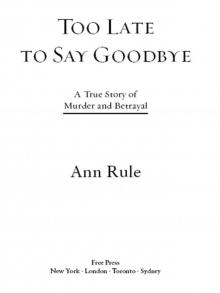 Too Late to Say Goodbye: A True Story of Murder and Betrayal
Too Late to Say Goodbye: A True Story of Murder and Betrayal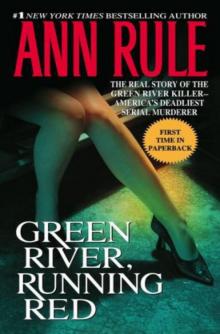 Green River, Running Red
Green River, Running Red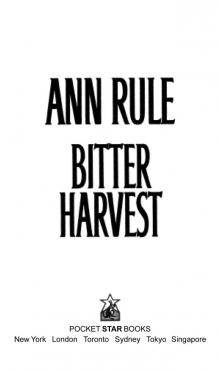 Bitter Harvest
Bitter Harvest Dead by Sunset: Perfect Husband, Perfect Killer?
Dead by Sunset: Perfect Husband, Perfect Killer?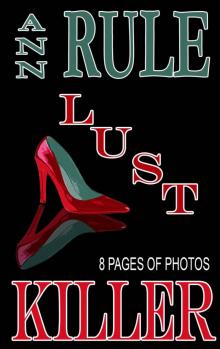 Lust Killer
Lust Killer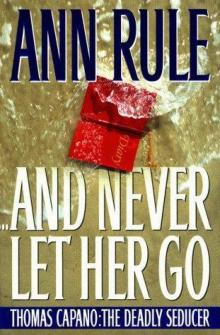 And Never Let Her Go: Thomas Capano: The Deadly Seducer
And Never Let Her Go: Thomas Capano: The Deadly Seducer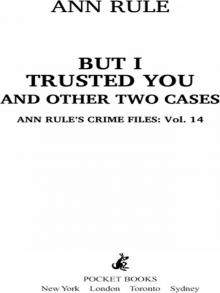 But I Trusted You and Other True Cases
But I Trusted You and Other True Cases Smoke, Mirrors, and Murder and Other True Cases
Smoke, Mirrors, and Murder and Other True Cases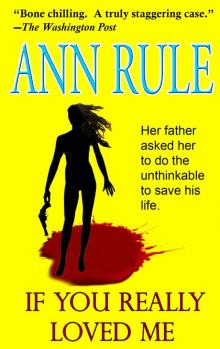 If You Really Loved Me
If You Really Loved Me Kiss Me, Kill Me and Other True Cases
Kiss Me, Kill Me and Other True Cases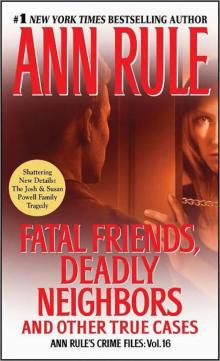 Fatal Friends, Deadly Neighbors and Other True Cases
Fatal Friends, Deadly Neighbors and Other True Cases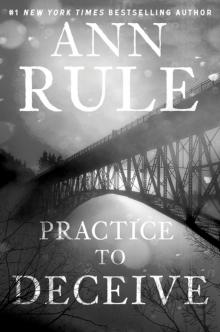 Practice to Deceive
Practice to Deceive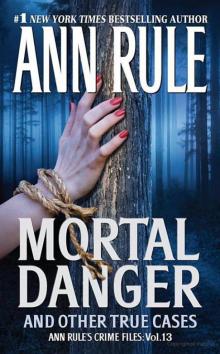 Mortal Danger and Other True Cases
Mortal Danger and Other True Cases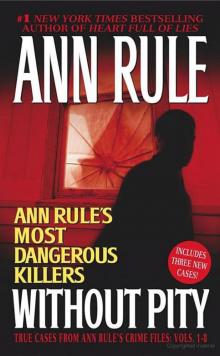 Without Pity: Ann Rule's Most Dangerous Killers
Without Pity: Ann Rule's Most Dangerous Killers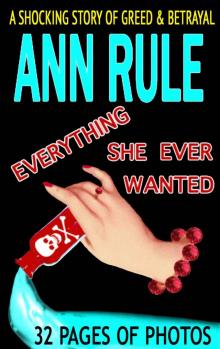 Everything She Ever Wanted
Everything She Ever Wanted A Fever in the Heart and Other True Cases
A Fever in the Heart and Other True Cases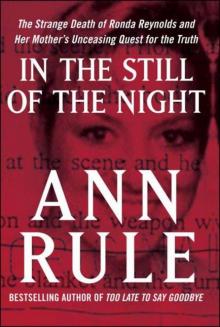 In the Still of the Night
In the Still of the Night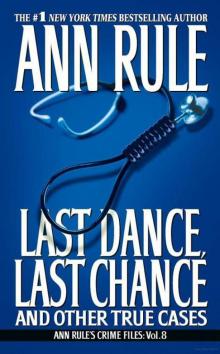 LAST DANCE, LAST CHANCE - and Other True Cases
LAST DANCE, LAST CHANCE - and Other True Cases A Rage to Kill
A Rage to Kill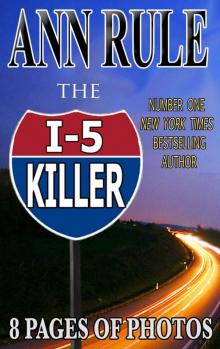 The I-5 Killer
The I-5 Killer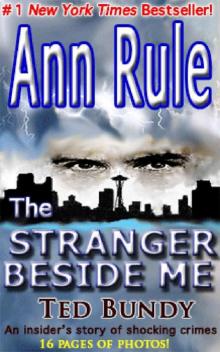 The Stranger Beside Me
The Stranger Beside Me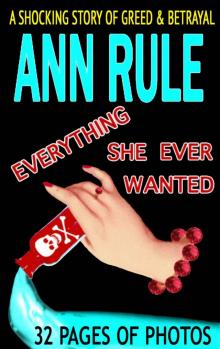 Everything She Ever Wanted: A True Story of Obsessive Love, Murder, and Betrayal
Everything She Ever Wanted: A True Story of Obsessive Love, Murder, and Betrayal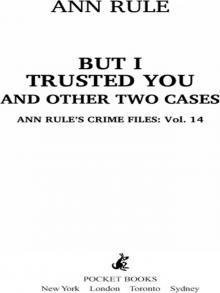 But I Trusted You
But I Trusted You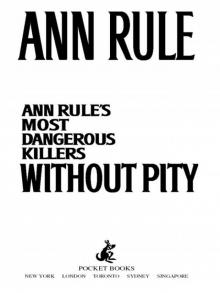 Without Pity
Without Pity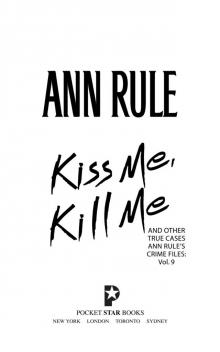 Kiss Me, Kill Me
Kiss Me, Kill Me Too Late to Say Goodbye
Too Late to Say Goodbye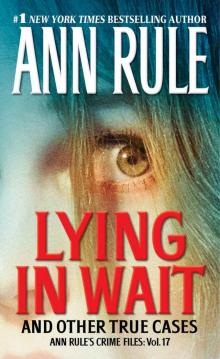 Lying in Wait
Lying in Wait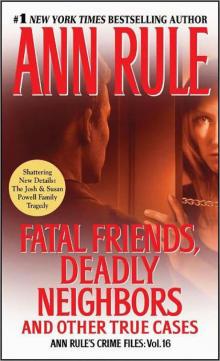 Fatal Friends, Deadly Neighbors
Fatal Friends, Deadly Neighbors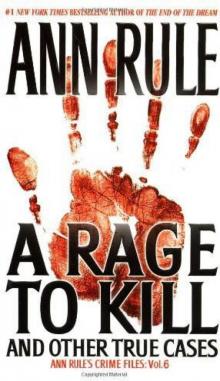 A Rage to Kill: And Other True Cases
A Rage to Kill: And Other True Cases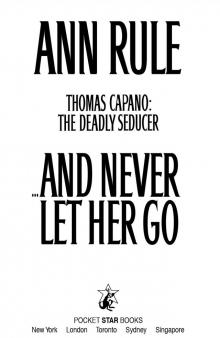 And Never Let Her Go
And Never Let Her Go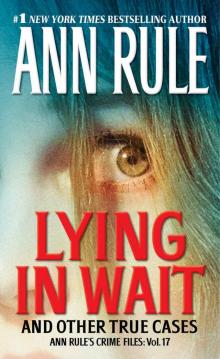 Lying in Wait Ann Rule's Crime Files Vol.17
Lying in Wait Ann Rule's Crime Files Vol.17 Blood Secrets: Chronicles of a Crime Scene Reconstructionist
Blood Secrets: Chronicles of a Crime Scene Reconstructionist No Regrets
No Regrets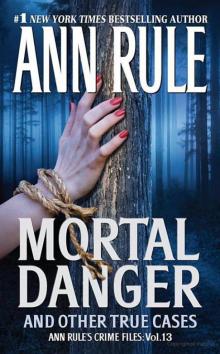 Mortal Danger
Mortal Danger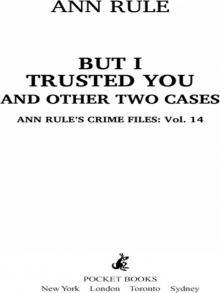 But I Trusted You: Ann Rule's Crime Files #14
But I Trusted You: Ann Rule's Crime Files #14 Empty Promises
Empty Promises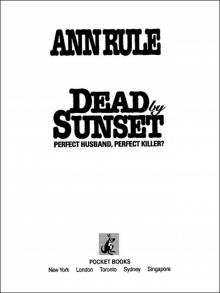 Dead by Sunset
Dead by Sunset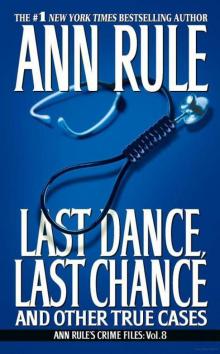 Last Dance, Last Chance
Last Dance, Last Chance Don't Look Behind You
Don't Look Behind You